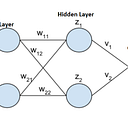Atransability
As discussed previously, the externai of man involves his level of awareness. A man who is unaware of himself and, by extension, his environment is far from ideal.
Man’s externai also involves his will. A result of will iS man’s transformation of the external world. This transformation may be direct or indirect, but what matters is that his will is actualized to some extent.
One, naturally, may ask: How does a being’s will interact with another being’s awareness?
An example can be seen in religion.
Religion is the will of the prophets carried out by followers.
Prophets begin with a set of beliefs they wish to foster upon on mankind. These beliefs flow from their awareness of an unseen that only they can perceive. Whether the awareness is false or not does not matter; afterall, their will is real.
Post this awareness, a prophet communicates with the rest of society and uses various methods of persuasion to transfer his awareness to others.
This transferrence of awareness is denoted atransness.
Normally, atransness benefits both the communicator and the communicatee. For instance, being aware of a bear near a clan’s cave conjures images in the clan members’ minds, inducing fear and prompting action.
Atransness is primarily a mechanism for inducing others to realise your will. Actions induced by the transference of awareness are caused by the imagination of the communicatee. Whereby, they project themselves in the future and then act to maximise their well-being.
Note, dear reader, the topic of awareness can be imaginary; however via atransness a man can still induce real action. Atransness is pivotal within all religions, but the forgetful nature of man counters this ability. Before writing, the will of prophets became muddled over time and eventually are coopted by the will of others.
Only with the advent of writing could will could be solidified, although this was also inadvertently modified over time. Intelligent prophets, such as Muhammad, recognized this and vehemently opposed innovation of any sort.
Muhammad saw innovation as disgusting as it harmed his realization of will.
In successful religions, long-term counter-innovation measures are paired with short-term ones — for instance, daily prayers and yearly fasting rituals.
I should note that atransness is not the same as communication. Communication is merely a method for attempting to transfer awareness. Atransness, however, involves the receiver absorbing the communicated information, envisioning themselves in the future (including potential dangers and benefits), returning to the present, and then acting to maximize their perceived future state.
A person who has trained their atransability can use atransness to persuade atransees that acting upon his will will maximise their benefits.
Hence, the ideal man must cultivate his atransability, for it enables him to realize his will.
Even beyond his death — legacy.
